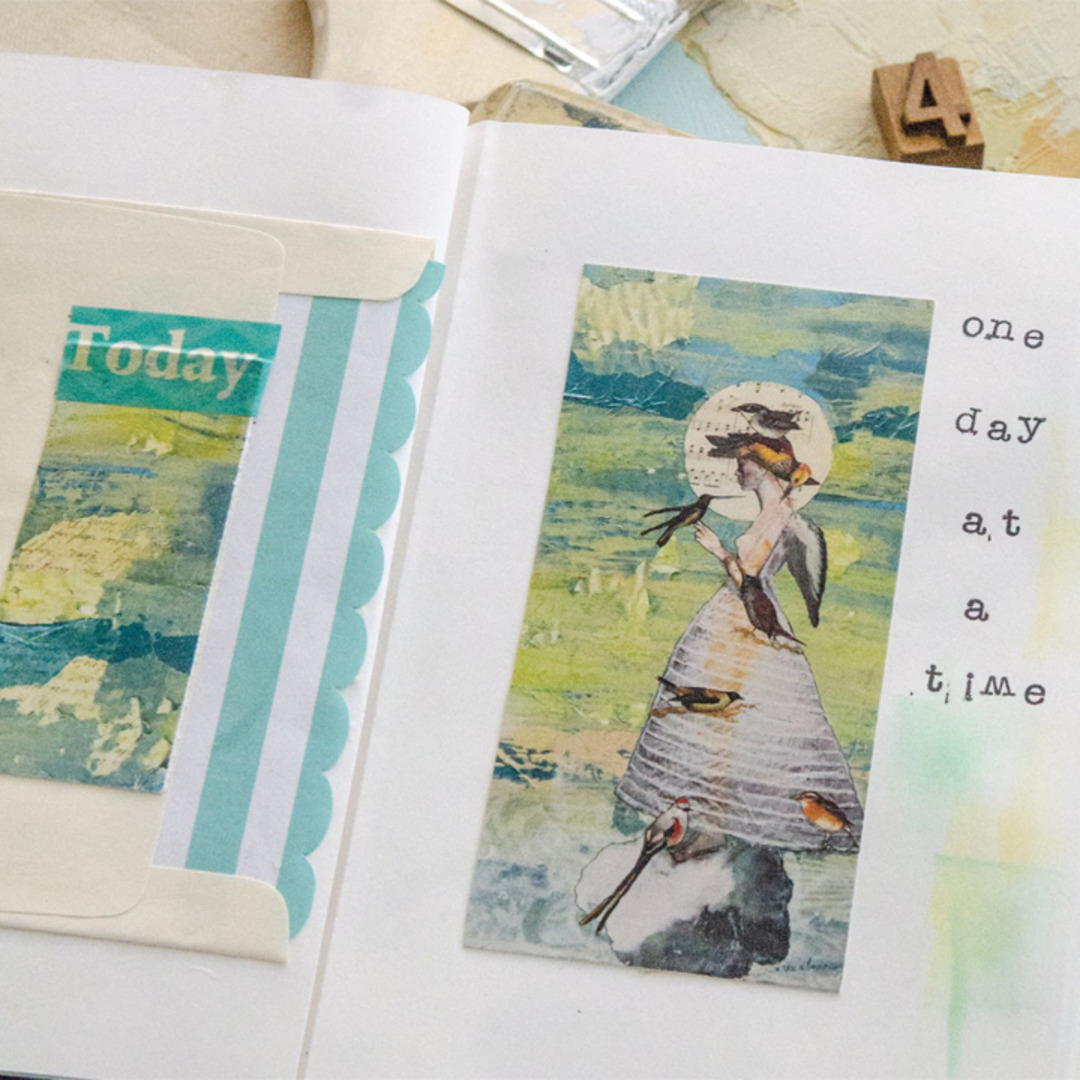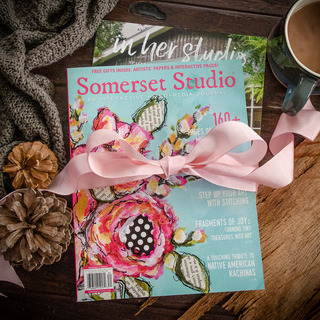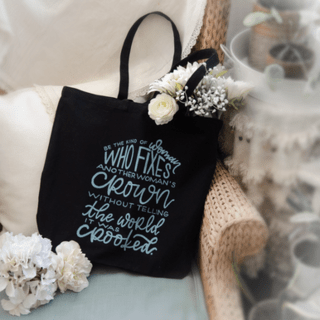
Junk Journaling Joy: How to Make Junk Journals Unique to You
Mar 12th 2024
What is a junk journal? It is a one-of-a-kind, eclectic 'you' type of book. The beauty of a junk journal is that it can be anything you want it to be. Not only does junk journaling provide a creative outlet for self-expression, but this tactile and hands-on activity can be your way to unwind and refresh. Learn more about junk journaling in this blog.
What is Junk Journaling?
Junk journaling is an art journaling form that involves using recycled or found materials to create personalized and unique notebooks. At its core, junk journaling is about embracing the beauty of imperfection, and there are no strict rules – your imagination is the limit. The "junk" in junk journals can be anything from old magazines, envelopes, and ticket stubs to scraps of painted collage papers, ephemera, and everything in between.
Junk journal pages are usually of varying sizes, which adds to the fun, interactive nature, allowing you to see snippets of the before-and-after pages as you flip through the book. Because the papers are usually lighter, you often see decorative and masking tapes holding pages together, stapled tags, and folded flip-outs revealing secret compartments and stories.
One of the defining characteristics of junk journaling is its emphasis on storytelling. Each page serves as a canvas for you to document your thoughts, memories, and experiences in a visually captivating way. Every element added to your junk journal, in turn, contributes to the narrative of your life.
Explore inspiring junk journals of artists in Art Journaling magazine.
MARY TROUP⎟ SOMERSET STUDIO SUMMER 2020
The Difference Between Journaling, Junk Journaling, and Scrapbooking
- Purpose: Traditional journaling focuses on personal reflection, while scrapbooking is about preserving memories and events. Junk journaling combines elements of both, offering an artistic approach to showcase introspection and experiences.
- Materials: Traditional journals document thoughts on blank or lined paper with minimal embellishments or decorative elements. Scrapbooks preserve photographs with acid-free, archival-quality paper, whereas junk journals use found materials and ephemera to add texture and visual interest to the pages.
- Presentation: Junk journals bridge the gap between traditional journals and scrapbooks, incorporating artistic elements and written entries in a more whimsical and eclectic style.
Getting Started with Junk Journaling
Anyone can start a junk journal with just a few basic supplies and a willingness to experiment. Here are some steps to help you jumpstart your junk journaling journey.
1. Gathering Your Materials
Found Materials
There are endless possibilities of materials you can use for your junk journal. Here are some ideas:
- Ephemera: Hunt for unique ephemera, such as vintage postcards, labels, and tickets. These items add nostalgia and character to your journal pages.
- Paper: Collect scrapbook paper, vintage magazines, and old book pages. Each type of paper brings its own aesthetic and texture to your journal.
- Natural Elements: Infuse a touch of the outdoors into your journal. Add small twigs and stones, collect feathers, or press flowers and leaves.
- Textiles: Incorporate ribbons, fabric, lace, scraps, or even small patches of old clothes. Textiles add dimension to your pages.
Essential Tools
Equipping the right tools can make your junk journaling experience more enjoyable and efficient. Here are some essential tools to consider:
- Scissors and Craft Knife: Invest in high-quality scissors and a sharp craft knife for precise cutting of paper and materials.
- Glue and Adhesives: Use a variety of adhesives like glue sticks, double-sided tape, or Mod Podge for adhering materials to your pages.
- Pens and Markers: Have a selection of pens, markers, and pencils for writing, doodling, and adding details to your journal pages.
- Stamps and Ink Pads: Add visual appeal to your pages with rubber stamps and archival ink pads.
2. Setting up a Dedicated Space
Designating a specific area for junk journaling can enrich your creative experience. Here are some tips for setting up your space:
- Organization: Keep your materials easily accessible and organized with shelves, containers, or bins to store your supplies.
- Good Lighting: Ensure ample lighting to prevent eye strain and for you to accurately see colors and details.
- Comfortable Seating: A comfortable chair or cushion goes a long way to support your back and posture, especially during long journaling sessions.
DIANNE FAGO⎟ ART JOURNALING AUTUMN 2021
3. Designing Your Junk Journal
Choosing a Theme
Choosing a theme for your junk journal provides a cohesive direction and inspiration for your creative process. You can base your theme on a particular aesthetic (such as vintage, shabby chic, or bohemian), a specific topic (such as travel, nature, or family memories), or your own experiences and interests.
Experimenting with Layout and Composition
Here are some layout ideas to consider:
- Grid Layout: If you seek a clean and organized look, arrange your elements in a grid pattern.
- Collage Layout: Create collages by layering different textures and materials.
- Asymmetrical Layout: Create a dynamic and playful composition by placing elements off-center or at different angles.
Adding Layers and Texture
Layers and texture are one of the defining features of junk journaling. Here are some techniques to try:
- Layering: Try layering different materials like ephemera, paper, and fabric to create depth and dimension on your pages.
- Texture Paste: Apply texture or modeling paste with a stencil or palette knife to create raised patterns and designs.
- Embellishments: Incorporate dimensional embellishments like beads, buttons, charms, and sequins to add tactile interest and sparkle.
4. Applying Journaling Techniques
Writing Prompts
Writing prompts can be instrumental in sparking creativity and inspiring journal entries. Here are some examples of writing prompts to consider:
- Reflective Prompts: "What are three things I'm grateful for today?" or "Describe a happy memory from your childhood."
- Imaginative Prompts: "If you could travel anywhere in the world, where would you go and why?" or "Write a short story inspired by a dream you had."
- Prompt Cards: Create a deck of prompt cards with various themes or topics. Draw a card at random and use it as inspiration for your journaling session.
Find more soul-stirring prompts for journaling in Field Guide To Everyday Magic magazine.
ROBEN-MARIE SMITH⎟ ART JOURNALING SPRING 2018
Artistic Elements
Junk journaling isn't just about writing; it's also about incorporating artistic elements to enhance your pages. Here are some techniques to explore:
- Doodling: Illustrate your thoughts and ideas with doodles and sketches.
- Watercolor Painting: Experiment with watercolors to add intricate designs or simply washes of color to your pages.
- Collage: Create visually dynamic compositions by layering text, images, and other materials.
- Mixed Media: Combine various mediums – from acrylic paint and stencils to ephemera and found objects – to make your junk journal one-of-a-kind.
Learn more about mixed-media art in Somerset Studio magazine.
5. Binding Your Junk Journal
Choosing a Binding Method
There are several binding methods to consider when assembling your junk journal. Here are a few options:
- Saddle Stitching: This simple and versatile binding method involves stapling pages together along the spine.
- Coptic Stitching: Coptic stitching allows your journal to lay flat when open and is ideal for journals with thick or mixed-media pages.
- Ring Binding: Ring binding allows you to easily add or remove pages from your journal, making it a flexible option for ongoing journaling.
Decorating the Cover
The cover of your junk journal is like its first impression – it sets the tone for what's inside. Here are some ideas for decorating your journal cover:
- Fabric Cover: Use fabric scraps or old clothing to create a soft and tactile cover for your journal.
- Decoupage: Decorate your cover with layers of paper, images, and embellishments using decoupage techniques.
- Mixed-Media Collage: Combine different techniques and materials for a stunning cover.
6. Preserving Your Creations
Once you've completed your junk journal, don't forget to preserve your creations. Here are some preservation tips:
- Protective Sleeves: Protect individual pages from yellowing and damage with archival-quality sleeves.
- Laminating: For extra protection against wear and spills, consider laminating certain pages or elements.
- Storage: Store your completed junk journals away from direct sunlight in a dry, cool place to prevent deterioration and fading.
Your next junk journal is waiting to come to life – all it needs is your creative touch. Find inspiration for junk journaling within the pages of our magazines.







